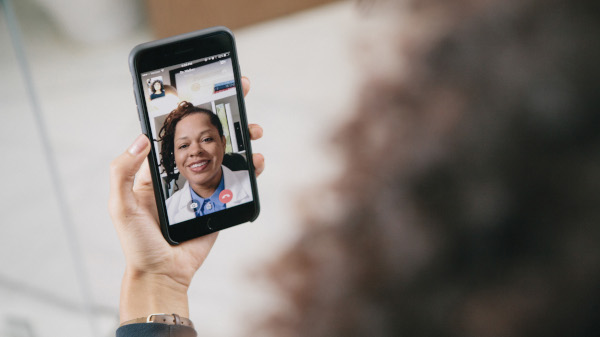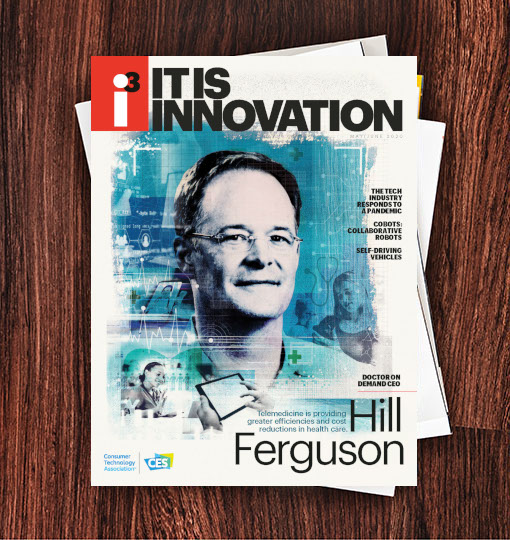Doctor On Demand is available 24/7 — nights, weekends and holidays. Patients can be seen for 90% of the conditions usually treated in an ER or urgent care setting, or address mental health issues such as anxiety, fear or depression. The company’s new health plan, partnering with Humana, is called On Hand and enables members to see a primar y care doctor at home, the office or in the car — wher ever they may be. Doctor on Demand acts as a concierge, organizing imaging, MRIs, x-rays and whatever follow up is needed. About 92% of cases can be r esolved over the web, the remaining 8% are referred to specialists for serious medical conditions, giving patients access to the best care possible and helping to avoid misdiagnoses.
Telemedicine is also making health care accessible to all consumers, not just those with employer-provided plans. Doctor on Demand can connect anyone — with or without insurance — to physicians, saving valuable time and money. The company, based in San Francisco, also has offices in Minneapolis and Washington D.C.
Leading this innovative company is CEO Hill Ferguson, a former senior executive at PayPal, the worldwide online payments system that supports online money transfers, and prior VP of product and marketing at Zong, a mobile payment solutions provider. He has experience leading companies at every stage of growth, from founding a company to serving as a senior executive in a high-growth public company. He shared his insights on the rise of telemedicine with i3 recently.
The COVID-19 outbreak is driving much more broad-scale awareness for the benefits of virtual care. This is the first time we’ve seen telemedicine recommended as a first line of care by government officials, including the President of the United States, the CDC, HHS, health plans and employers. This recommendation was made to help slow the spread of COVID-19 nationwide, and we have been proud to serve this public health role while lessening the burden on the health care system.
Our team mobilized quickly and coordinated closely with the CDC to help with preparation, surveillance, triage and treatment of patients with suspected COVID-19. What we ended up seeing was an increase in visits from patients with not only coronavirus concerns, but those with acute and chronic conditions who opted to seek care at home to prevent potential exposure to illness at an in-person visit. In March, we saw 110% more demand than we had seen the month prior when the outbreak had just begun. We also saw an uptick in our behavioral health services as many patients looked for at-home options for mental health concerns. In response to the rapid increases in demand, we brought on hundreds of additional licensed physicians, psychologists and psychiatrists to provide care. We also continued to make platform enhancements to ensure the best possible patient experience for the thousands of Americans who turn to virtual care each day.

Doctor On Demand connects patients to licensed health care providers for “virtual visits” in all 50 states, 24/7. Our urgent care and behavioral health services are available to patients through health plans, employers and directly to consumers. Patients simply access Doctor On Demand through our app or website. We also o er a fully integrated health care platform called Synapse which allows health plans and employers to deliver comprehensive virtual primary care to their populations.
At Doctor On Demand, our video-first approach to care puts patients face-to-face with a doctor within minutes. A video visit is really similar to an in-person experience. The doctor will review patient history, assess their symptoms, provide a treatment plan and when needed, write prescriptions. Since the doctor can see the patient, they’re able to deliver the highest clinical quality while also developing a trusted doctor-patient relationship. We find that patients enjoy the convenience and quality of their first visit and will often opt to use virtual care again.
While people are often surprised by the versatility of telemedicine to triage and treat many concerns, there are still physical (i.e. suturing, resetting bones) and regulatory limitations to what a telemedicine provider can deliver. At Doctor On Demand, we believe in a video-based care model so that doctors can treat patients based on visual cues as well as the concerns the patient is voicing. During the COVID-19 outbreak, we have seen many telemedicine regulation changes which validate the quality and effectiveness of video-based care. For instance, Medicare policy changes are giving patients and their families greater assurance there won’t be any gaps in accessing care while they’re home. CMS has also updated their guidance for risk adjustment to include diagnoses resulting from telehealth appointments, which include real-time video telecommunications. These changes mean that more patients can access providers on-demand than ever before.
We will continue to see innovative virtual care solutions that bridge the gap between patients and doctors.Hill Ferguson CEO, Doctor On Demand
While insurance isn’t required for Doctor On Demand, tens of millions of Americans have access to covered medical and behavioral health visits. If your health plan or employer contracts with Doctor On Demand, you as a patient will have access to our service for a substantial discount, often for a small out-of-pocket co-payment. During the COVID-19 crisis, most plans and employers have fully subsidized the cost of our medical services, making it free for their plan members or employees. Without insurance, the cost of a medical visit is $75 and our mental health services start at $129.
We are seeing thousands of new patients each day as people in all 50 states look to virtual care as an option to stay safe and healthy. Patients are continuing to rate their experience 4.9 out of 5 stars and are delighted by the convenience and the quality of care they receive with Doctor On Demand. Once patients have that initial experience, we find that they return to use virtual care again and again.
We’re proud to provide a platform for doctors to practice and provide care in a safe environment. Telemedicine makes continuing to practice an option for providers who are quarantined but otherwise healthy.
While access to the internet is necessary for face-to-face virtual care, we’re pleased to see many internet services maintaining bandwidth and rates during the COVID-19 outbreak.
We use AI/ML in various parts of our system to enhance the user experience, to automate some of the provider workflows and to improve our ability to do insurance claims-based billing and settlement.

I3, the flagship magazine from the Consumer Technology Association (CTA)®, focuses on innovation in technology, policy and business as well as the entrepreneurs, industry leaders and startups that grow the consumer technology industry. Subscriptions to i3 are available free to qualified participants in the consumer electronics industry.